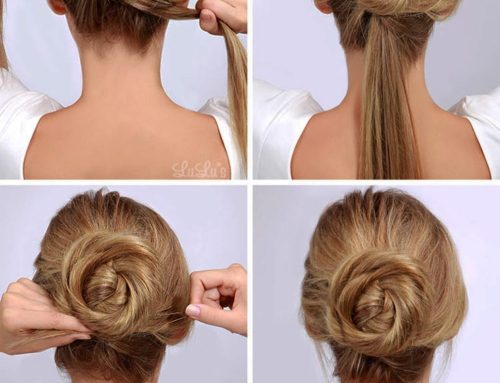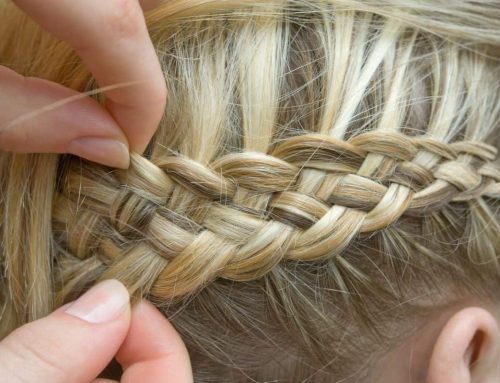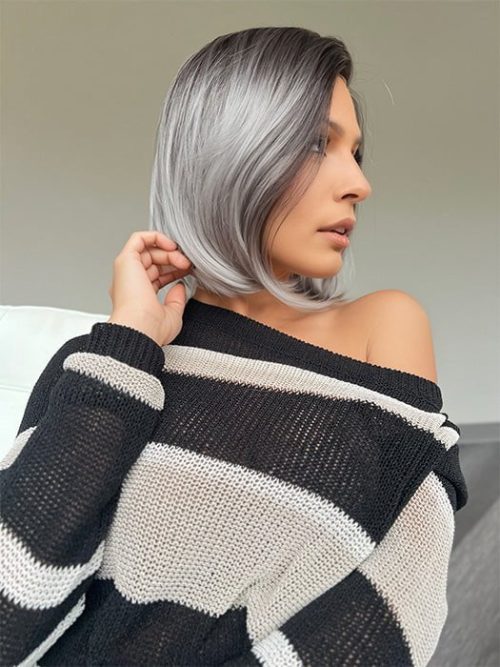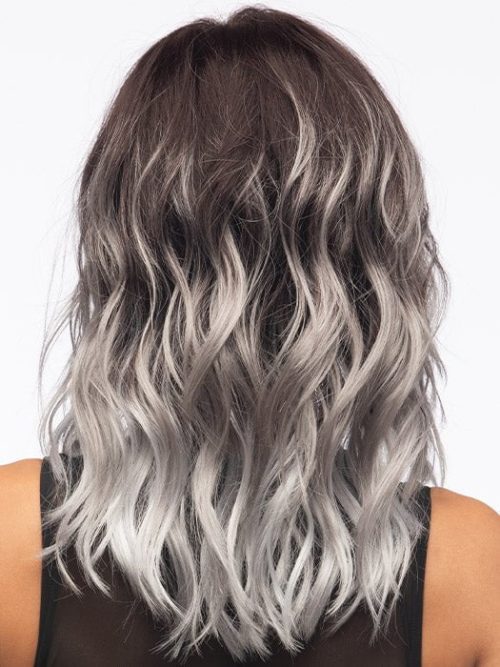Hey there! Are you thinking about getting a wig but feel overwhelmed by all the different options out there? Don’t worry, you’re not alone. One of the first things to consider when choosing a wig is the texture. The right texture can not only enhance your look but also boost your confidence. Let’s dive into what wig textures are all about, why they matter, and how to pick the perfect one for you!

Understanding Wig Textures
What Exactly Is Wig Texture?
So, what do we mean when we talk about wig textures? Basically, it’s the style or pattern of the hair in the wig. The texture can range from pin-straight to big bouncy curls, and each type has its own vibe. Choosing the right texture can help your wig look more natural and blend seamlessly with any natural hair you might have peeking out.

The Importance of Texture
Texture isn’t just about looks; it plays a big role in how the wig feels and behaves. For example, curly wigs might require more maintenance than straight ones, but they also offer a volume that can be a real game-changer for your style. The right texture can mimic the natural fall of hair, making your wig look and feel as natural as possible.
Types of Wig Textures
Exploring the Options
Let’s break down the most common types of wig textures you’ll find:
-
Straight: Sleek and smooth, straight wigs are super versatile and can range from silky fine to coarse. They’re perfect for a sharp, polished look.
-
Wavy: These wigs have a soft, natural wave pattern that offers a bit of body and movement. Wavy wigs can be lightly tousled for a casual look or styled for sophisticated elegance.
-
Curly: From loose curls to tight spirals, curly wigs are all about volume and drama. They’re great for anyone looking to add some bounce and vibrancy to their style.
-
Kinky or Afro-Textured: These wigs emulate natural African hair and can be a fantastic way to celebrate natural texture with an added flair.
Each texture has its own unique charm and suits different styles and occasions. Choosing the right one can help you express your personal style and feel great while wearing your wig.

Who Should Choose What?
- If you love a sleek, easy-to-maintain look, straight textures might be for you.
- If you’re going for a laid-back style that’s still chic, check out wavy textures.
- For those who want to make a bold statement, curly textures can really turn heads.
- And if you’re looking to rock a natural, full-bodied style, kinky or afro-textured wigs are definitely the way to go.
Factors Influencing Texture Choice
When picking the texture of your wig, think about how it will complement your lifestyle and personal taste. Here’s what to consider:
Face Shape
Different textures can highlight or downplay features of your face:
- Round faces may benefit from voluminous styles like curly or wavy textures to elongate the face.
- Square faces can be softened with curls and waves.
- Oval faces are versatile and can pull off any texture beautifully.

Lifestyle Considerations
Think about your daily activities:
- Need something low maintenance? Straight wigs might be easier to handle.
- Want something that stands out without too much effort? Curly or wavy could be your go-to.
Matching Your Style
Your wig should reflect your personal style, whether it’s bold and adventurous or subtle and sophisticated. Choose a texture that feels like a natural extension of your personality.
Stay tuned for the next section where we’ll dive deeper into choosing and maintaining your perfect wig texture!

Synthetic vs. Human Hair Textures
Understanding the Differences
When it comes to wig textures, the choice between synthetic and human hair is crucial. Here’s a quick rundown:
-
Synthetic Hair: These wigs are made from man-made fibers designed to mimic real hair. They hold their style well, even after washing, which means less styling hassle for you. However, synthetic fibers have a different sheen and movement compared to human hair, which can be noticeable.
-
Human Hair: Human hair wigs feel and behave just like your own hair. They’re more versatile in terms of styling because you can use heat tools just like on natural hair. They do require more maintenance, though, similar to natural hair, especially when it comes to preserving their texture.
Pros and Cons
-
Synthetic Hair Pros: Cost-effective, low maintenance, and holds style regardless of the weather.
-
Synthetic Hair Cons: Less natural-looking than human hair, limited styling options due to heat sensitivity.
-
Human Hair Pros: High-quality, natural appearance, and complete styling versatility.
-
Human Hair Cons: Higher price point, requires more care, especially to maintain its texture over time.

How to Maintain Different Wig Textures
Caring for Straight Wigs
Straight wigs are relatively easy to care for:
- Use a wide-tooth comb to detangle gently.
- Wash with a sulfate-free shampoo and let air dry on a wig stand to prevent any bends or kinks.
Maintaining Wavy and Curly Wigs
Wavy and curly wigs need a bit more attention to keep them looking their best:
- Use products designed for curly hair to maintain moisture and definition.
- Avoid combing when dry; instead, use your fingers to detangle and style.
Special Care for Kinky or Afro-Textured Wigs
Kinky or afro-textured wigs require the most care due to their intricate textures:
- Regularly apply oils or leave-in conditioners to keep the hair moisturized and healthy.
- Use a hooded dryer or air dry after washing to maintain the natural volume and texture.
Styling Techniques for Various Textures
Tools and Products
- Straight Textures: Use flat irons or blow dryers with a smoothing nozzle for a sleek look.
- Wavy/Curly Textures: Curling irons or rollers can enhance or redefine curls and waves.
- Kinky Textures: Avoid heat as much as possible; opt for twist-outs or braid-outs to style.
Styling Tips
- Always use a heat protectant when using heat styling tools, regardless of the wig texture.
- Experiment with different products like mousses, serums, and sprays designed for specific hair textures to achieve the best results.

Common Issues and Solutions with Wig Textures
Dealing with Tangling and Matting
- Regular detangling with the appropriate tools (wide-tooth combs for straight and wavy, fingers for curly and kinky) is key.
- Use a silk or satin cap at night to reduce friction that can cause tangling.
Managing Loss of Texture
- For human hair wigs, deep conditioning treatments can help restore life and bounce.
- For synthetic wigs, using a fabric softener and water mixture can help in reviving the texture.
Controlling Frizz
- Use anti-frizz products suited to the wig type.
- Ensure the wig is fully dry before styling to prevent frizz, especially in curly and kinky textures.
Stay tuned for the conclusion in the next section, where we’ll wrap up with some final thoughts and additional tips for choosing and enjoying your wig with the perfect texture!
Conclusion
Choosing the right wig texture is more than just about aesthetics; it’s about finding a style that fits seamlessly into your life and enhances your natural beauty. By understanding the different types of wig textures available and how to care for them properly, you can ensure your wig not only looks fabulous but also lasts longer and remains comfortable to wear.
Recap of the Importance of Wig Texture
Remember, the texture of your wig can dramatically affect how natural it looks and feels. Whether you prefer the sleekness of straight wigs, the dynamic shape of curly wigs, or the boldness of kinky textures, there’s a wig out there that’s perfect for you. It’s all about matching the wig texture to your lifestyle, maintenance preference, and personal style.
Encouragement to Explore and Experiment
Don’t be afraid to try different textures and styles. Sometimes the best way to discover what works for you is through experimentation. Visit wig shops, try on different types, and don’t hesitate to ask for professional advice. You might be surprised at what suits you best!

Call to Action
Now that you’re armed with knowledge about wig textures, why not take the next step? Explore your options, consult with a wig specialist, and find that perfect wig that feels like it was made just for you. Whether you’re enhancing your look for a special occasion or seeking a new everyday style, the right wig texture can make a significant difference.
Final Tips
- Always prioritize quality when choosing a wig. A good quality wig not only looks more natural but also withstands wear and care better.
- Keep up with regular maintenance. This will help your wig maintain its texture and appearance for as long as possible.
- Remember to have fun with it! Wigs are a wonderful way to express your style and creativity.
Wrapping Up
We hope this guide has helped you understand the importance of choosing the right wig texture and given you the confidence to select, style, and maintain your wig. Wigs are a fantastic fashion tool that can offer you versatility and a fresh look at any moment. So go ahead, find your perfect match, and enjoy the new possibilities it brings to your style repertoire!
Potential Article Titles:
- Unlocking the Secrets to Perfect Wig Textures: A Comprehensive Guide”
- Choosing the Right Wig Texture for You: Tips and Tricks for a Natural Look
- “Mastering Wig Textures: From Selection to Maintenance”
- The Ultimate Guide to Understanding and Caring for Different Wig Textures
By following these tips and guidelines, you’ll be well on your way to enjoying a wig that not only enhances your look but also fits comfortably into your everyday life. Happy wig hunting!
FAQ
-
What is the most natural-looking wig texture?
- The most natural-looking wig texture typically depends on your natural hair texture. For many, human hair wigs that match their natural hair texture provide the most realistic look. However, high-quality synthetic wigs can also appear very natural with modern technological advancements in wig design.
-
Can I change the texture of a synthetic wig?
- Generally, it’s not recommended to alter the texture of a synthetic wig significantly. Synthetic fibers are designed to hold their pre-styled texture and may be damaged by heat styling tools, unless they are specifically labeled as ‘heat-friendly’.
-
How often should I wash my wig to maintain its texture?
- It’s best to wash your wig every 6 to 8 wears, or whenever it begins to feel sticky, looks tangled, or smells less fresh. Over-washing can lead to faster degradation of both synthetic and human hair wig fibers.
-
What products should I use to maintain my wig’s texture?
- Use products specifically designed for wigs. For human hair wigs, lightweight, sulfate-free shampoos and conditioners are recommended. For synthetic wigs, use shampoos and conditioners formulated for synthetic fibers to help maintain the integrity and texture of the hair.
-
How can I prevent my curly wig from becoming frizzy?
- To prevent frizz, avoid brushing your curly wig when it’s dry and use products like curl-defining creams or sprays designed for synthetic hair. Additionally, storing your wig properly when not in use can help maintain the curls’ definition and reduce frizz.
-
Is it possible to perm or relax the texture of a human hair wig?
- Yes, since human hair wigs are made from real hair, they can be permed or relaxed. However, chemical treatments can shorten the lifespan of your wig and should be done by a professional to minimize damage.
-
Can I use regular hair products on my wig?
- It’s advisable to use products specifically formulated for wigs. Regular hair products may contain ingredients that can degrade the wig cap or the hair fiber, especially in synthetic wigs.
-
What is the best way to dry a wig to maintain its texture?
- The best way to dry a wig is to gently blot it with a towel and then allow it to air dry on a wig stand. Avoid wringing out the wig, as this can disrupt the fiber structure and texture.
-
How do I know if a wig texture matches my natural hair?
- To match a wig texture to your natural hair, consider both the curl pattern and the thickness of the fibers. Bring a photo of your natural hair to a wig shop or consult with a wig specialist to find the closest match.
These FAQs aim to help you make more informed decisions when purchasing, styling, and caring for your wig, ensuring you can enjoy a natural look and the longevity of your wig.




